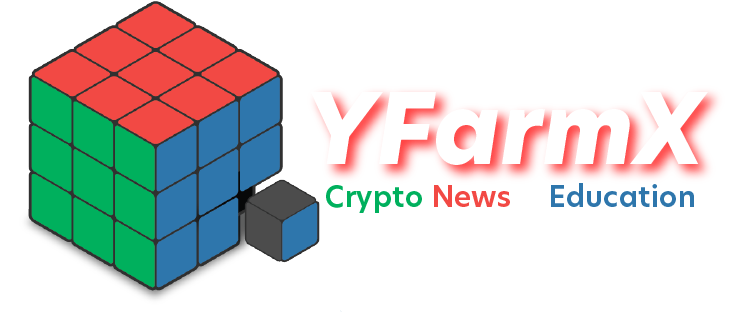For most of the past two years the term “metaverse” has been a synonym for puff-piece press releases, empty marketing campuses and that infamous screenshot of Mark Zuckerberg’s haunted avatar. Yet below the meme radar a voxellated contraption called The Sandbox has kept its head down and, with almost embarrassing competence, built a world that people actually use. Every quarterly update lands with the reassuring regularity of a dividend cheque; every patch notes reads like the minutes of a team that understands software, not just slogans. The result, on the brink of summer 2025, is a genuinely functioning, creator-led environment that might—quietly, unexpectedly—vindicate the very idea of a persistent digital universe.
Flight paths and physics
The headline change this year is deceptively small. Game Maker 0.11, shipped in February, added airborne mobility: avatars can double-jump, hover and, for brief ecstatic bursts, fly. The mechanism required a wholesale re-write of collision detection and a graceless slog through anti-cheat engineering, yet from the player’s perspective it landed serenely, like a patch of blue sky after a storm. Level design is already transforming. The best new experiences push vertically: a cloud-bash parkour course where gravity is more of a suggestion, a puzzle box in which clues are pasted under floating terraces, a racing track that loops into the stratosphere. The tech is invisible—precisely as it should be—but its creative consequences are vast. In a single patch The Sandbox escaped Minecraft’s horizontal tyranny and offered its builders a z-axis worth having.
The Sandbox in 2025
Patch work matters, but Alpha Season 5 is where those architectural tweaks become culture. The Sandbox has done away with its golden-ticket Alpha Pass raffles (a magnet for bots and a textbook lesson in perverse incentives) and replaced them with a free, six-week Battle Pass that drips SAND and NFTs in progressive tiers. The move trades hype for habit. Log-in counts no longer spike only on raffle days; they plateau pleasantly, suggesting people are returning for play rather than windfall. Universal’s Jurassic World hub—this year’s marquee partnership—acts as a living laboratory. Players tend a dinosaur sanctuary, gather upgrade tokens and, eventually, hatch a baby velociraptor NFT that grows as one meets weekly quest quotas. It is equal parts tamagotchi, DeFi yield farm and unashamed fun, and it hints at a future in which in-game progression and onchain ownership blend without the moral panic of “play to earn”.
VoxEdit grows up
Behind the scenes creators received their own emancipation. VoxEdit 2025.1.0 looks alarmingly like grown-up 3D software: dockable panels, timeline scrubbing that behaves, an inverse-kinematics panel that no longer freezes when faced with a quadruped. More importantly, the export button now spits out pristine GLTF files complete with animations. A voxel helmet sculpted for The Sandbox in 2025 can be dragged straight into Blender, Unreal, or—perish the thought—another metaverse. Interoperability has become a cliche of Web3 PowerPoints; here it is a functional fact. Creators on Discord talk in minutes saved, not buzzwords achieved. Animators no longer juggle “UI Tetris” across two monitors; indie studios prototyping for brand clients can meet deadlines measured in days. The facelift is, in the end, a productivity story, and productivity is what sustains an ecosystem once initial speculation ebbs.
Multichain, low friction and the death of the pop-up
Onchain, the company has treated user experience as a kind of negative-space sculpture: the less you see, the better it is. Meta-transactions now swallow most gas fees, and SAND liquidity on Binance Smart Chain and Coinbase’s Base network makes bridging a banality rather than a rite of passage. More than three million fee-free transactions have gone through without ceremony. For brand-new wallets, the absence of MetaMask pop-ups feels uncanny; for security professionals, it means a shrinking attack surface. Meanwhile the Sandbox DAO—armed with a 25 million SAND treasury—has processed seventeen proposals that read suspiciously like adult governance: creator grants, documentation improvements, even a line item for stress-testing multiplayer servers. In crypto, genuine stewardship is rarer than zero-day exploits; here it arrives with little fanfare.
Brands behaving themselves
Partnerships remain plentiful, but they have grown stranger, and that is to their benefit. The usual IP cavalcade—Attack on Titan, Teletubbies, Playboy—has been joined by the city of Austin, Texas, whose Cobbleland district serves up pixelated street art and “Keep Austin Weird” quests that funnel unsuspecting tourists to real-world craft-beer maps. Ubisoft’s Rabbids appear not merely as mascots but as NFT-gated level keys; Top Gear’s Stigverse uses the new physics stack to stage credible time-trial leaderboards. Each deal is less an advertising hoarding than a use-case trial. The most interesting of the lot, the Voxel Games Program, hands out SDKs to Unity and Unreal studios who dislike no-code editors but do covet an embedded wallet and a ready-made audience. If it scales, The Sandbox mutates from game engine to Web3 middleware. It is precisely the kind of tactical, almost boring infrastructure play that tends to outlast fashion cycles.
The creator-led flywheel
The metric that matters most is not SAND’s chart position but the 1,500 published experiences live on the map—up from a few dozen eighteen months ago. Many are rough, some are terrible, and a handful are minor works of interactive art. The point is not curation; it is velocity. Self-publishing, opened to all LAND owners late in 2023, plus the new rule-based scripting system, has turned The Sandbox into a discipline: build, iterate, publish, learn, repeat. Marketplace turnover has followed suit. Catalysts, wearables and asset bundles find buyers without leaving the platform; Magic Eden integration siphons in fresh fiat. Revenue per creator is modest, but creativity compounded by royalties is a potent economic engine. It looks, faintly, like an early Steam Workshop—only the mods are onchain and the revenue share is indelible.
Security as architecture, not posture
One of the more delightful non-events of 2024–25 is that The Sandbox has not been hacked. Its architecture helps: gameplay logic remains client-side, NFTs manage identity and provable scarcity, and the wallet signature threshold is low enough to deter the criminally curious. Anti-cheat routines shipped with Game Maker 0.11 clamp down on leaderboard farming, and the decision to throttle SAND rewards in favour of item drops defangs the typical play-to-earn exploit vectors. It is, in short, dull, resilient engineering—the kind that will never trend on crypto Twitter but does keep brands signing contracts.
A qualified, and therefore credible, optimism
The Sandbox in 2025 still has awkward edges. Retention between seasons is a perpetual worry; the DAO risks devolving into bureaucratic stodge; and there remains the existential question of whether a voxel aesthetic can sustain adults once nostalgia wanes. Yet these are operational headaches, not existential threats. While rivals chase headlines, The Sandbox ships patches. While pundits debate the death of the metaverse, this platform adds flight, rewrites physics and convinces Austin’s tourism board to voxelise Sixth Street.

It is tempting to call 2025 the year The Sandbox “won” the metaverse race. That would be premature—more a headline writer’s flourish than a sober assessment. What one can say, without hyperbole, is that The Sandbox in 2025 has graduated from proof of concept to functioning, scalable product. It offers hobbyists a no-code playground, studios an onchain SDK, brands a toolkit for fandom, and players an economy that rewards time rather than roulette spins. In a sector haunted by over-promising and under-delivering, such modest competence feels radical.
If the metaverse ever does become the banal, everyday layer technologists imagine—closer to broadband infrastructure than to Ready Player One—it will be because platforms like The Sandbox quietly kept building while everyone else refreshed token charts. On the evidence of 2025, the project is no longer an exuberant speculation. It is, instead, a gently compounding fact.
Nothing in this article constitutes financial advice. Always conduct your own research and consult a qualified professional before making investment decisions related to digital assets.



